
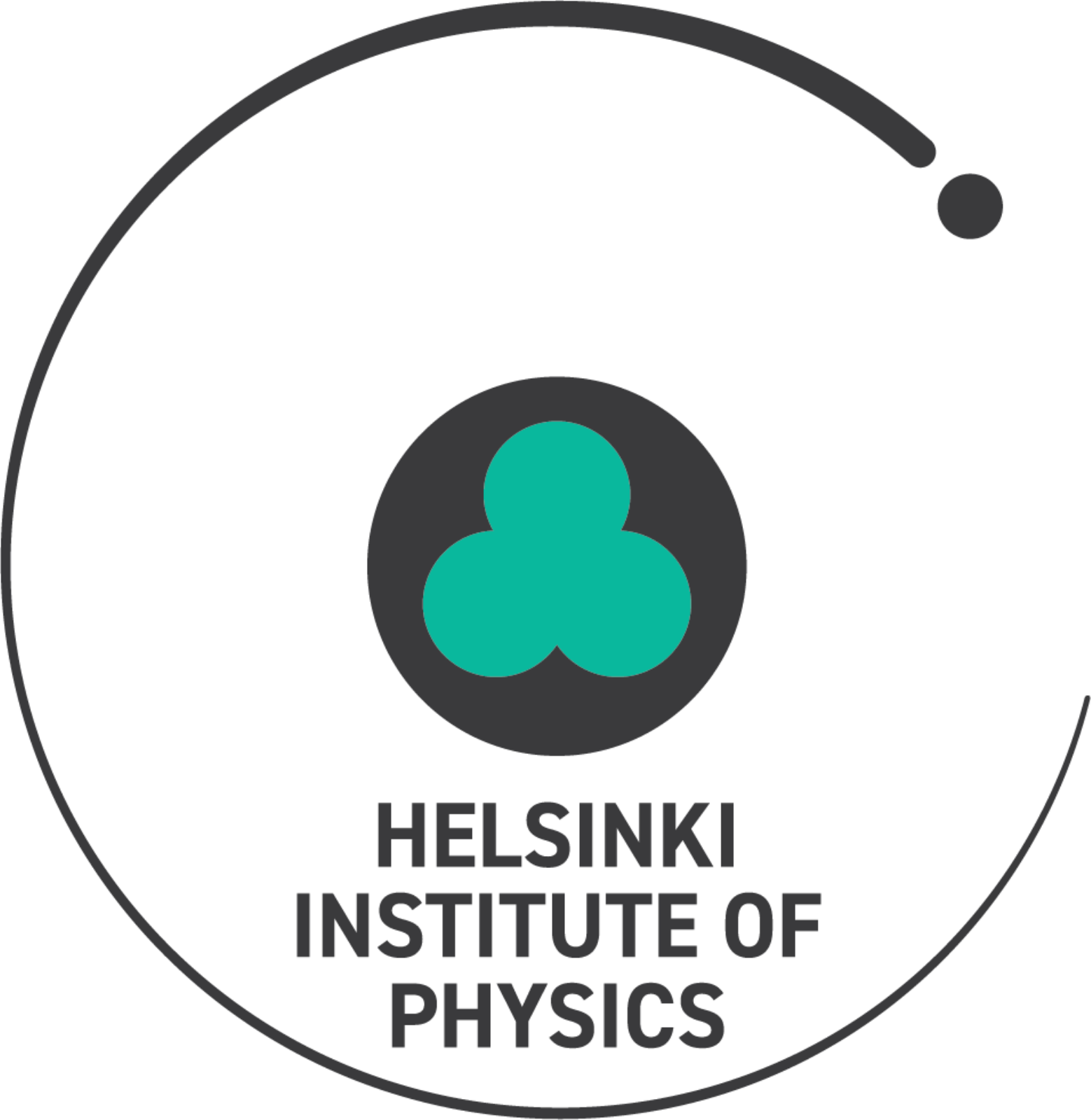
Status of hydrodynamical simulations of early universe phase transitions
David J. Weir [they/he]
University of Helsinki
This talk: saoghal.net/slides/coswg2023
10th LISA Cosmology Working Group Workshop
While you were waiting
You were watching a movie of vorticity $\nabla \times \mathbf{v}$ in a simulation of 2D acoustic turbulence by Jani Dahl
Scales and frequencies
By considering how GWs get redshifted on the way to us, and assuming they get produced at cosmological scales:
| Event | Time (s) | Temp (GeV) | $\mathbf{g}_*$ | Frequency (Hz) |
|---|---|---|---|---|
| QCD phase transition | $10^{-3}$ | $0.1$ | $\sim 10$ | $10^{-8}$ |
| EW phase transition | $10^{-11}$ | $100$ | $\sim 100$ | $10^{-5}$ LISA! |
| ??? | $10^{-25}$ | $10^9$ | $\gtrsim 100$ | $100$ |
| End of inflation | $\gtrsim 10^{-36}$ | $\lesssim 10^{16}$ | $\gtrsim 100$ | $\gtrsim 10^8$ |
[order-of-magnitude calculation!]
arXiv:2008.09136
Could BSM physics produce a stochastic background?
First-order phase transitions are a
- Out of sight of particle physics experiments, or
- At higher energy scales than colliders can reach
For example: electroweak PT
- Process by which the Higgs 'switched on'
- In the Standard Model it is a crossover
- Possible in extensions that it would be first
order
➥ colliding bubbles then make gravitational waves
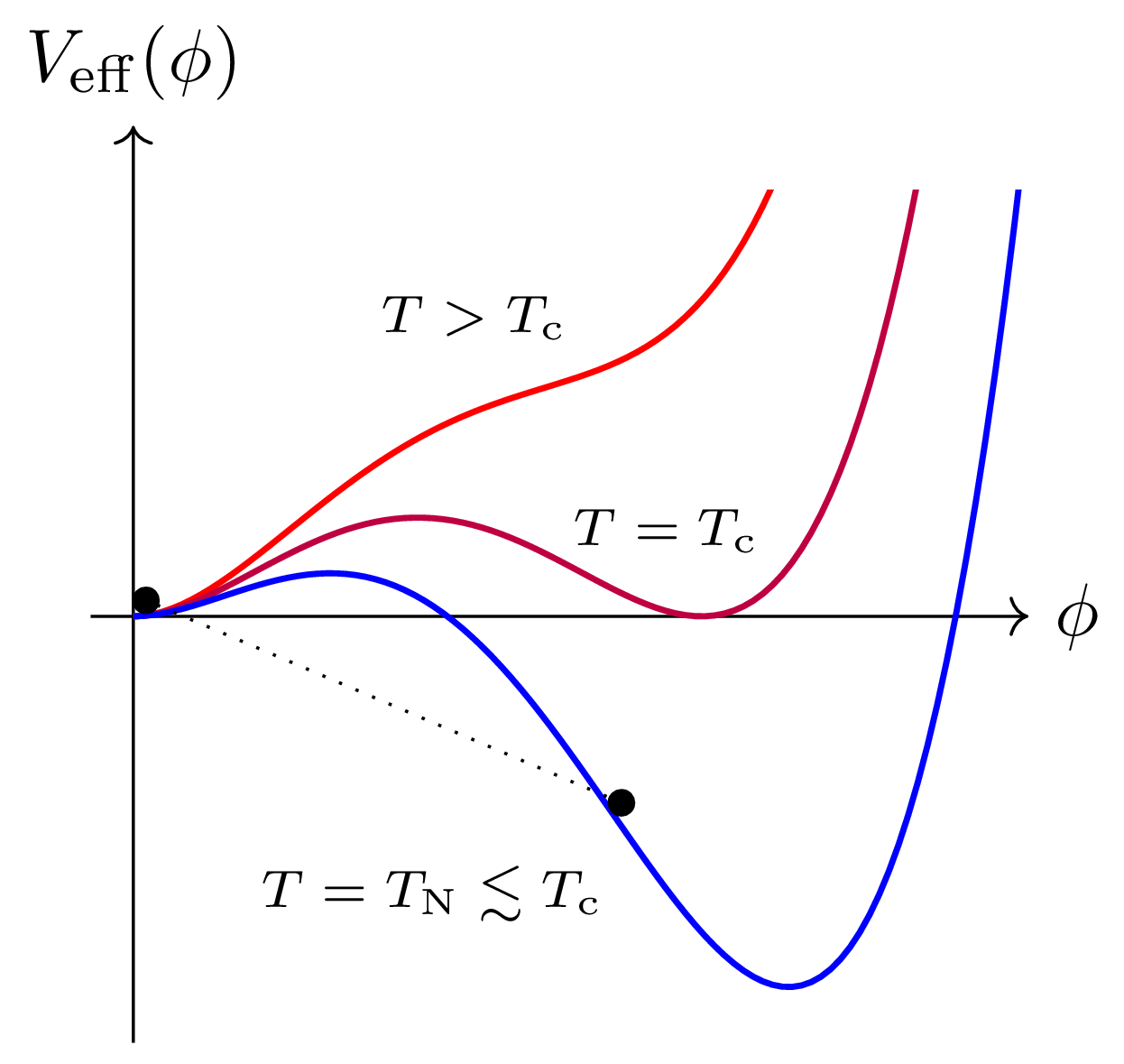
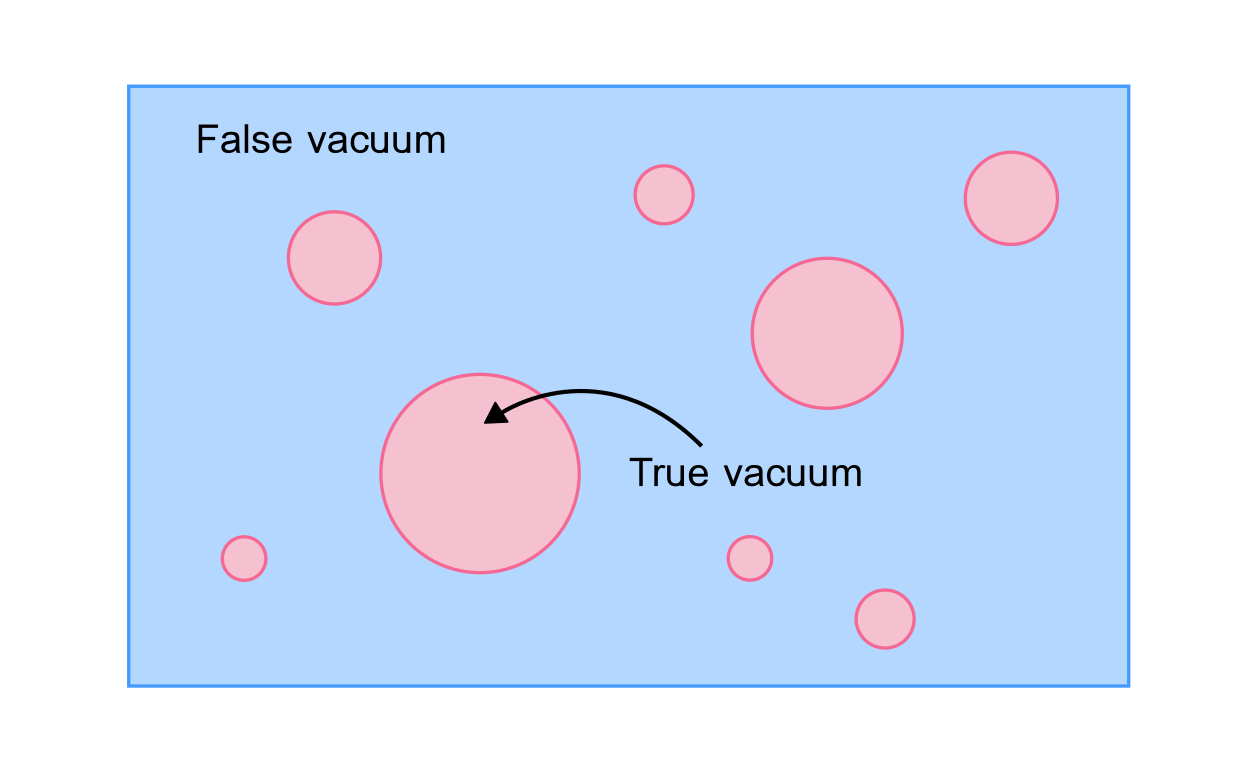
[what BSM physics might there be?]
Particle physics model
$\Downarrow \mathcal{L}_{4\mathrm{d}}$
Magical field theory stuff OG's talk!
(perturbative or lattice)
$\Downarrow$
Phase transition parameters
$\Downarrow \alpha, \beta, T_N, v_\mathrm{w}, \ldots$
Real time cosmological simulations
$\Downarrow \Omega_\text{gw}(f)$
Cosmological GW background
[what would we see as a result?]
[what BSM physics might there be?]
Particle physics model
$\Downarrow \mathcal{L}_{4\mathrm{d}}$
Magical field theory stuff OG's talk!
(perturbative or lattice)
$\Downarrow$
Phase transition parameters
$\Downarrow \alpha, \beta, T_N, v_\mathrm{w}, \ldots$
Real time cosmological simulations
$\Downarrow \Omega_\text{gw}(f)$
Cosmological GW background
[what would we see as a result?]
[what BSM physics might there be?]
Particle physics model
$\Downarrow \mathcal{L}_{4\mathrm{d}}$
Magical field theory stuff OG's talk!
(perturbative or lattice)
$\Downarrow$
Phase transition parameters
$\Downarrow \alpha, \beta, T_N, v_\mathrm{w}, \ldots$
Real time cosmological simulations
$\Downarrow \Omega_\text{gw}(f)$
Cosmological GW background
[what would we see as a result?]
Dynamics of phase transitions (probably) rely on relatively few parameters
Including:
- $\alpha$, the phase transition strength
- $\beta$, the inverse phase transition duration
- $T_N$, the temperature at which bubbles nucleate
- $v_\mathrm{w}$, the speed at which bubbles expand
Phase transition = out of equilibrium
- Bubbles nucleate (temperature $T_\mathrm{N}$, on timescale $\beta^{-1}$)
- Bubble walls expand in a plasma (at velocity $v_\mathrm{w}$)
- Reaction fronts form around walls (with strength $\alpha$)
- Bubbles + fronts collide GWs
- Sound waves left behind in plasma GWs
- Shocks [$\rightarrow$ turbulence] $\rightarrow$ damping GWs
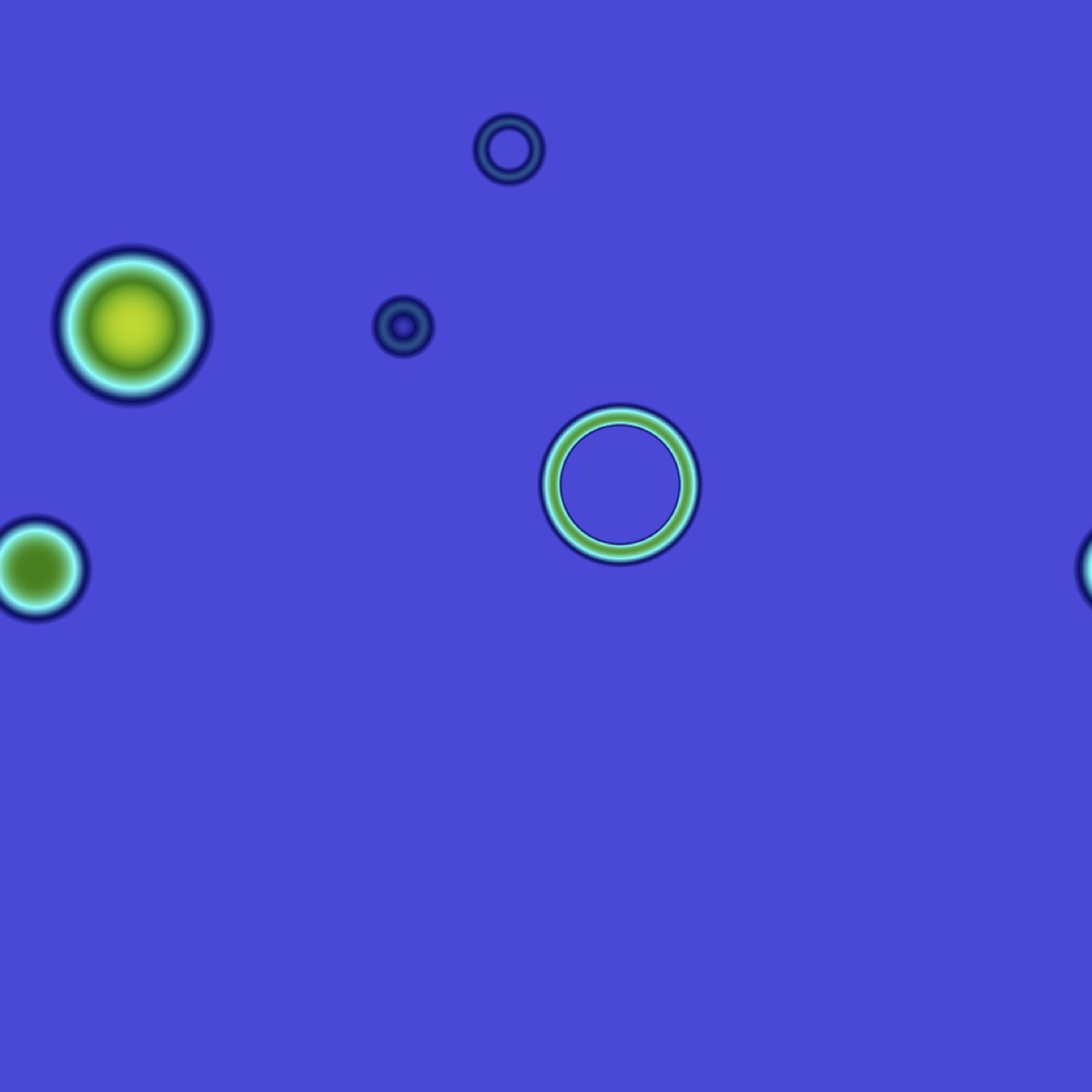
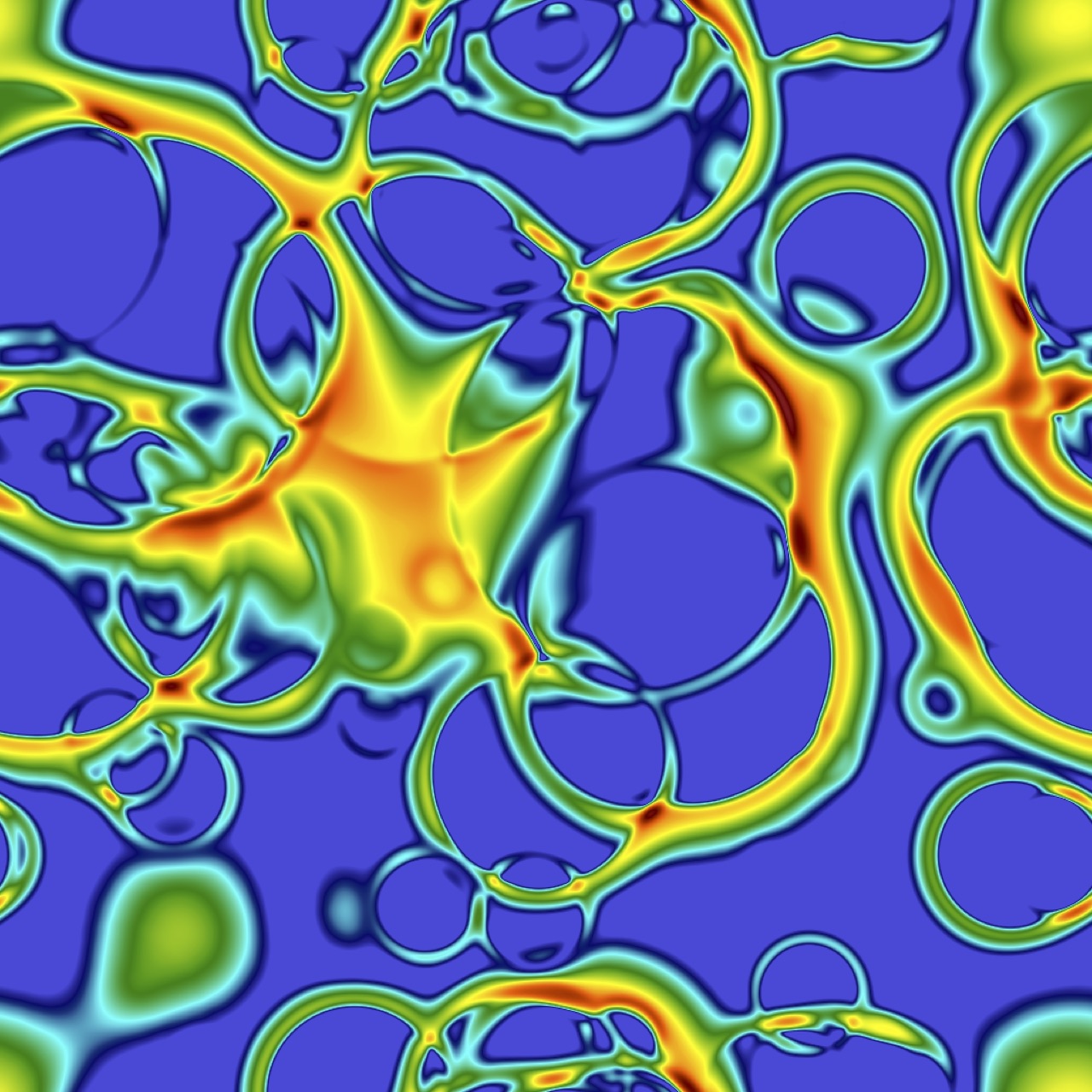
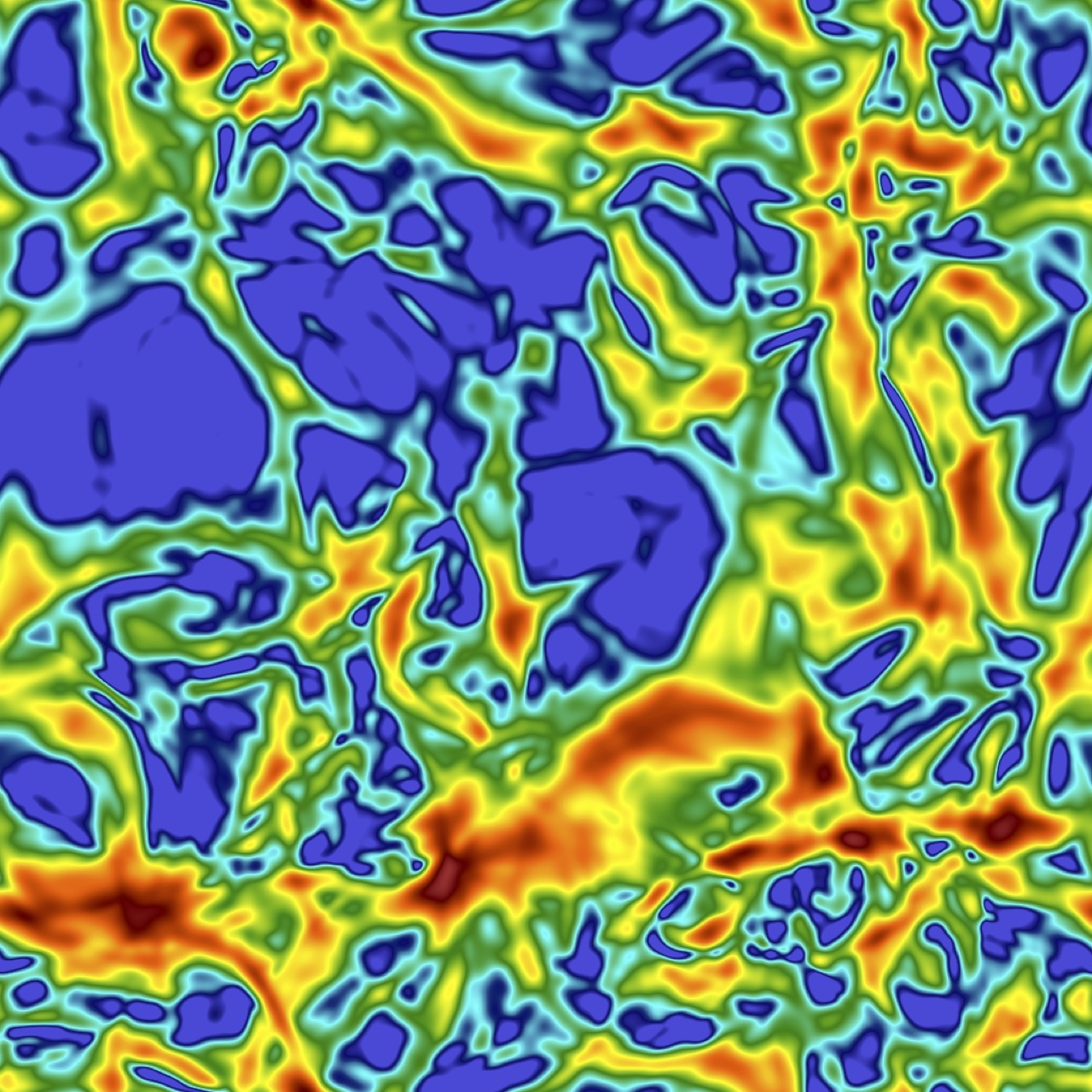
How are GWs produced at a first order phase transition?
- Not all phase transitions have $v_\mathrm{w} \ll c$ ...
- 'Vacuum' transitions with no couplings/friction
- 'Run away' transitions arXiv:1703.08215
- ... but if they do:
- Shear stress sourced most efficiently in first $1/H_*$
- Fluid motion becomes nonlinear on a time scale
$$\tau_\text{sh} = \frac{R_*}{\overline{U}} = \frac{\text{Bubble radius (i.e. typical length scale)}}{\text{Typical fluid velocity}}$$
Nonlinearities?
- Nonlinearities during the transition:
- Generation of vorticity
- Formation of droplets
- Nonlinearities after the transition:
- Shocks
- Turbulence (Kolmogorov
and acoustic)
Let's take a look at droplets and turbulence
Strong deflagrations ⇒ droplets
[$\alpha_{T_*} = 0.34$, $v_\mathrm{w} = 0.24$ (deflag.)], velocity $\mathbf{v}$
A closer look in spherical geometry
Droplets form ➤ walls slow down
At large $\alpha_{T_*}$ reheated droplets form in front of the walls
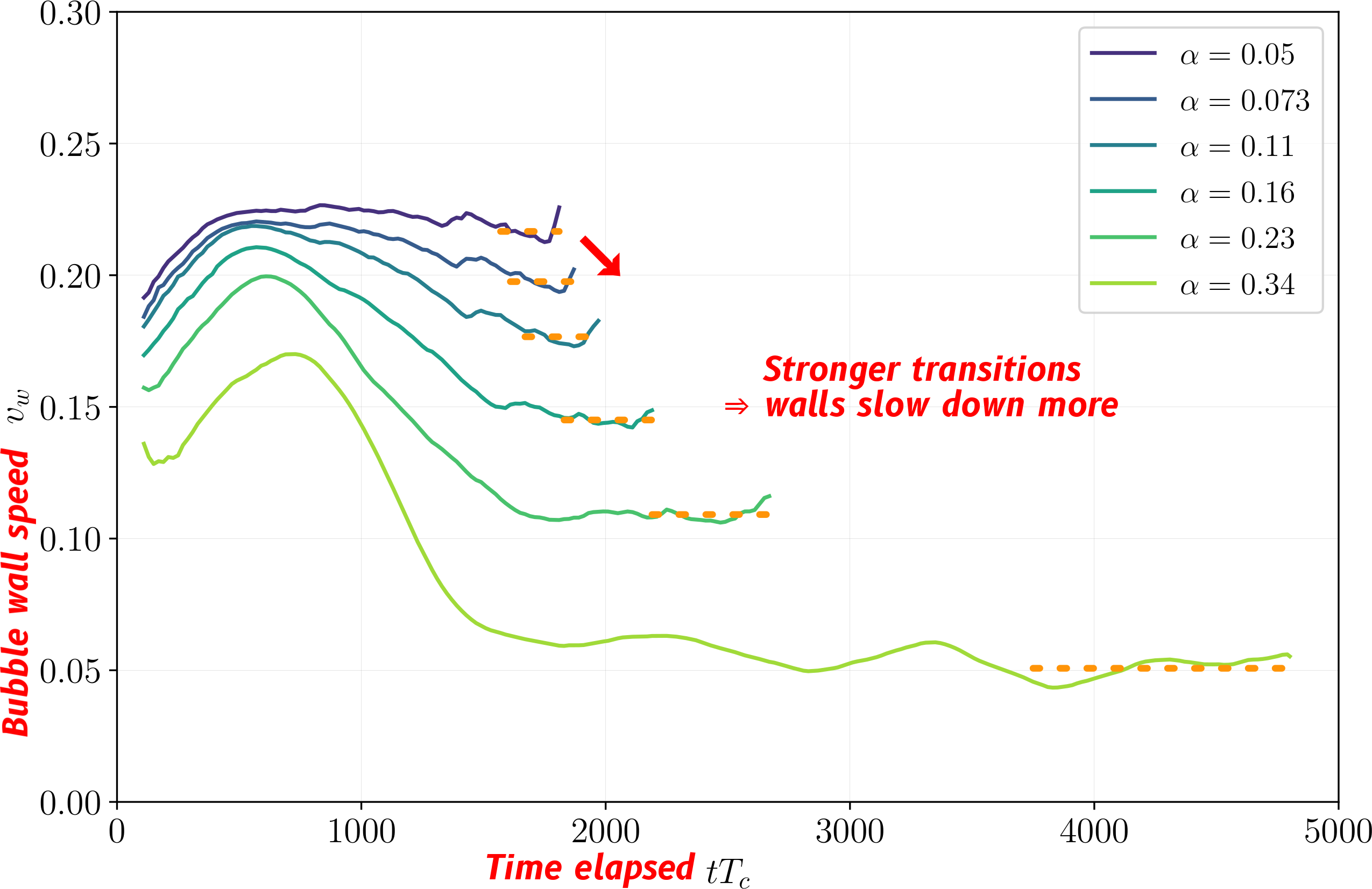
Droplets may suppress GWs
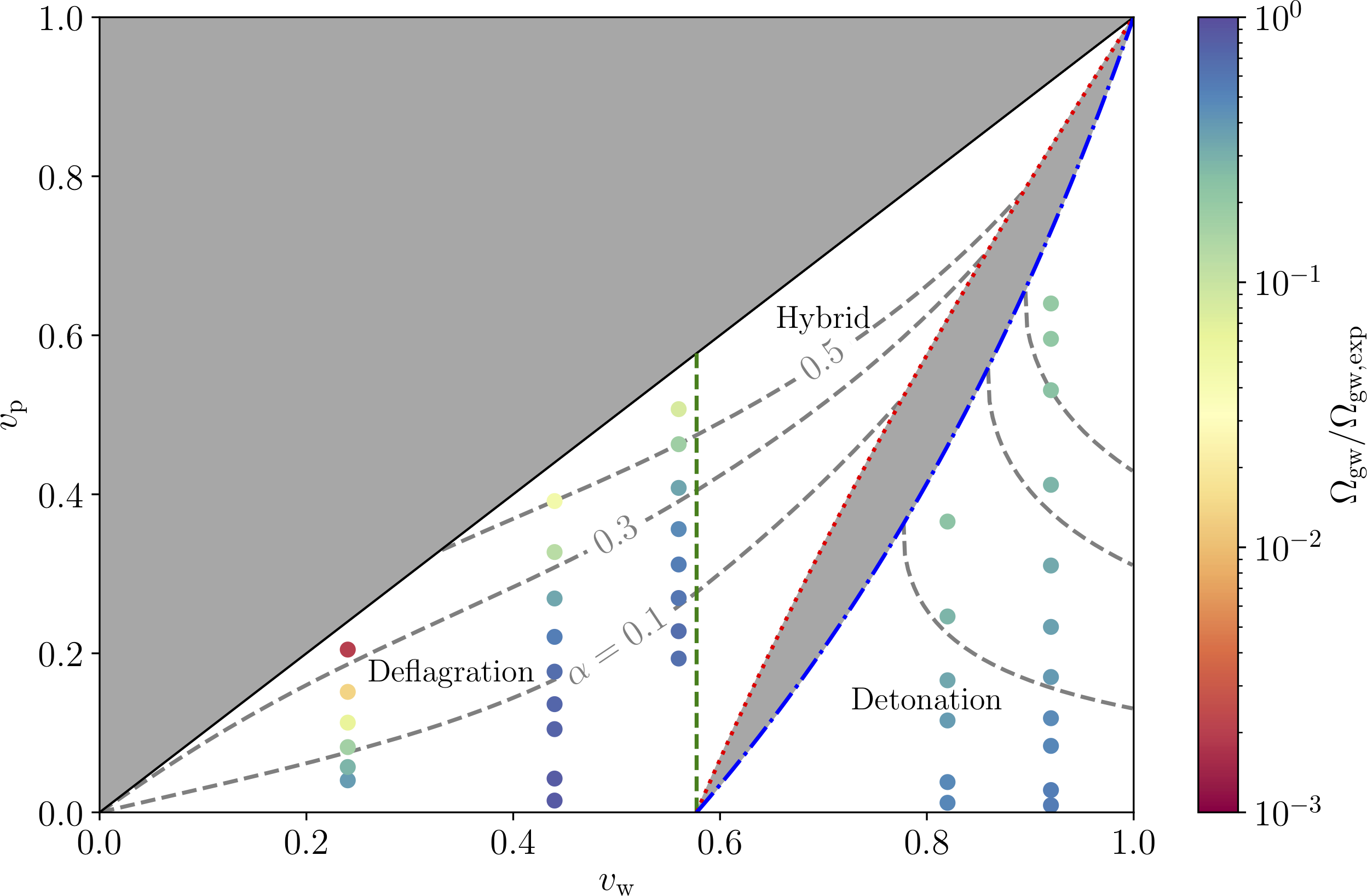
case
scenario ➘
Droplets and phenomenology
- Long-lived regions with moderate wall velocities
- Could this help with baryogenesis? For strong transitions, walls often move too quickly.
- Proposals for dark strongly interacting matter 'nuggets' where the phases coexist e.g. arXiv:1810.04360 arXiv:1912.02830
- Other applications?
- Further 3D simulations will be needed
Sound waves ➤ acoustic turbulence
- Thermal phase transitions produce sound waves
- Over time, sound waves steepen into shocks
- Overlapping field of shocks = 'acoustic turbulence'
- Distinct from, but related to Kolmogorov turbulence
2d acoustic turbulence
Acoustic turbulence: GWs
Spectral shape $S$ as function of $k$ and integral scale $L_0$:
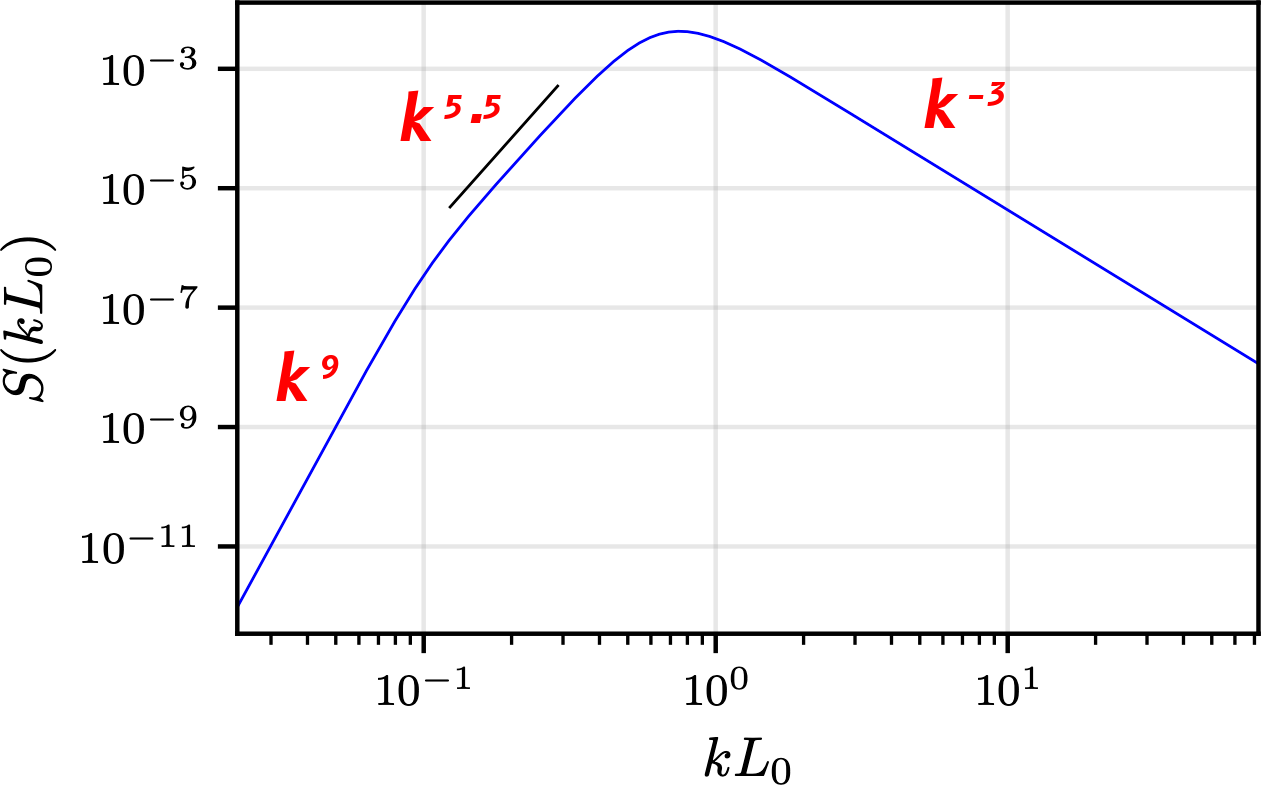
Different from sound waves and Kolmogorov turbulence!
⇒ all must be taken into consideration.
Kolmogorov turbulence: GWs
Validated theoretical modelling of GWs from Kolmogorov turbulence with large-scale simulations
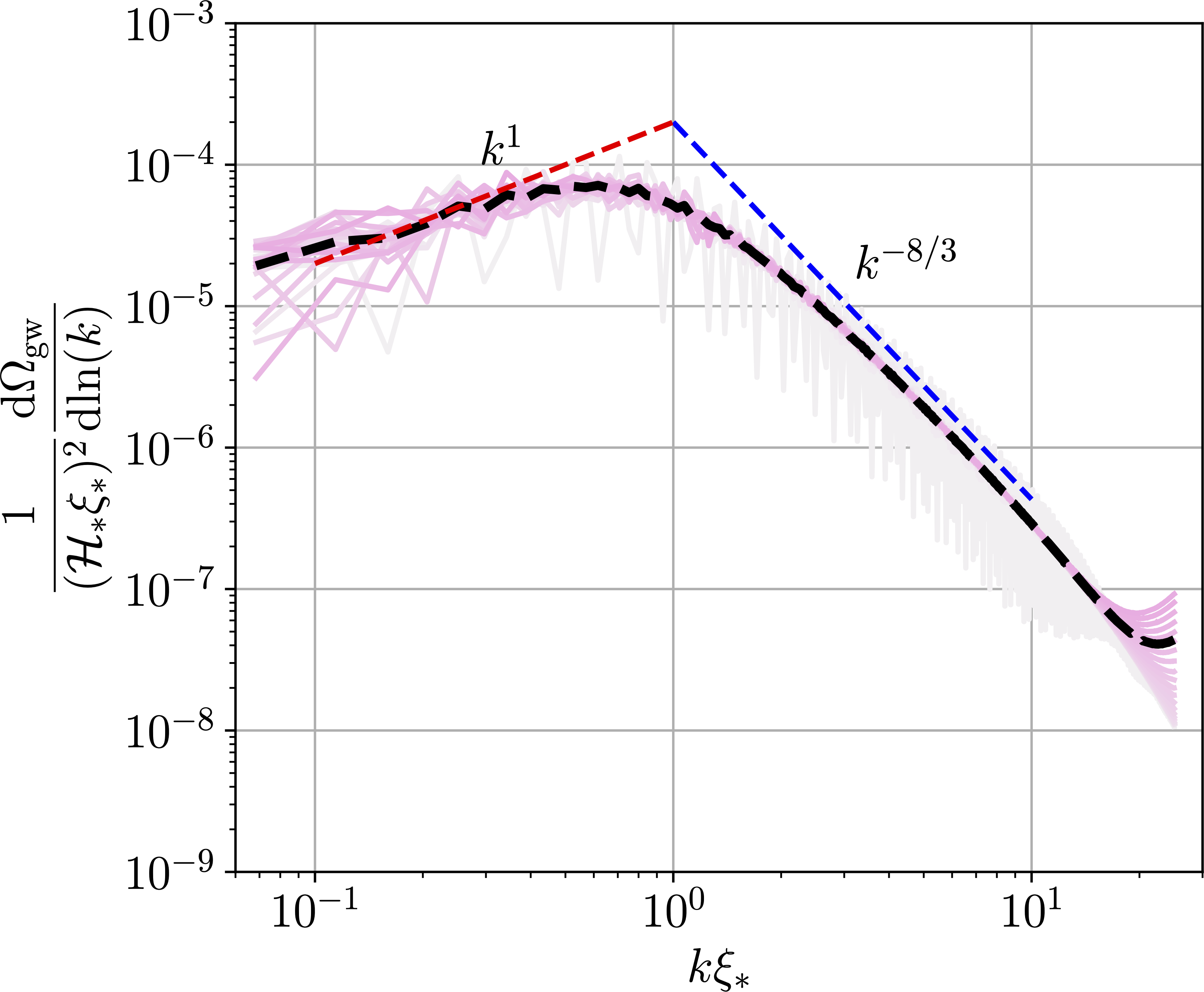
Thanks
- Students:
Jani Dahl, Ethan Edwards, Jenni Häkkinen, Anna Kormu, Tiina Minkkinen, Satumaaria Sukuvaara, Essi Vilhonen - Postdocs:
Deanna C. Hooper, Lauri Niemi - Collaborators:
including Pierre Auclair, Chiara Caprini, Daniel Cutting, Oliver Gould, Mark Hindmarsh, Kari Rummukainen, Dani Steer, Tuomas Tenkanen
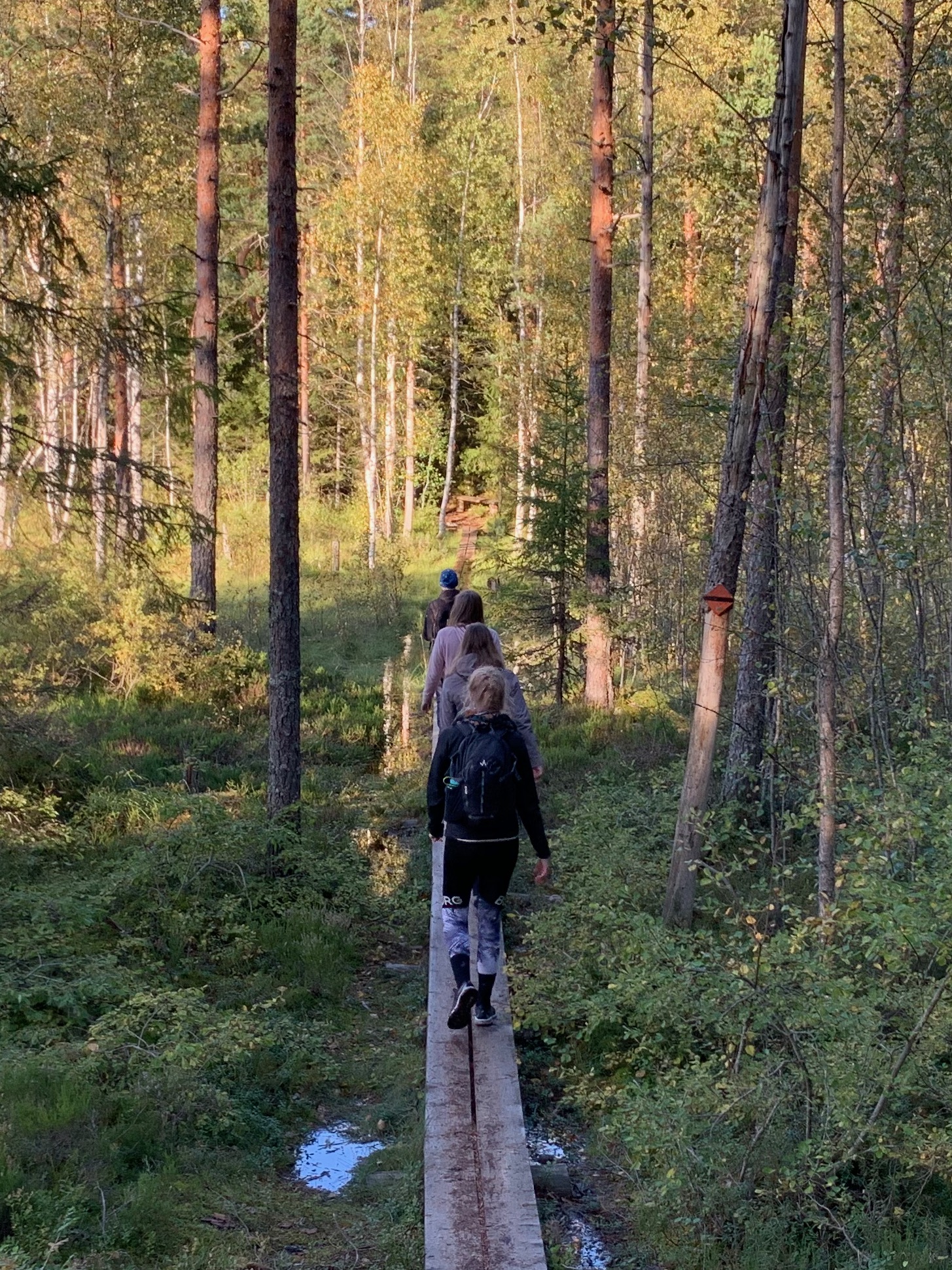
Key point: strong transitions ⇒ nonlinearities
- Nonlinearities include:
- Turbulence (Kolmogorov-type and acoustic)
- 'Hot droplets'
- Consequences for
- Observables [e.g. gravitational waves]
- Processes [e.g. baryogenesis]